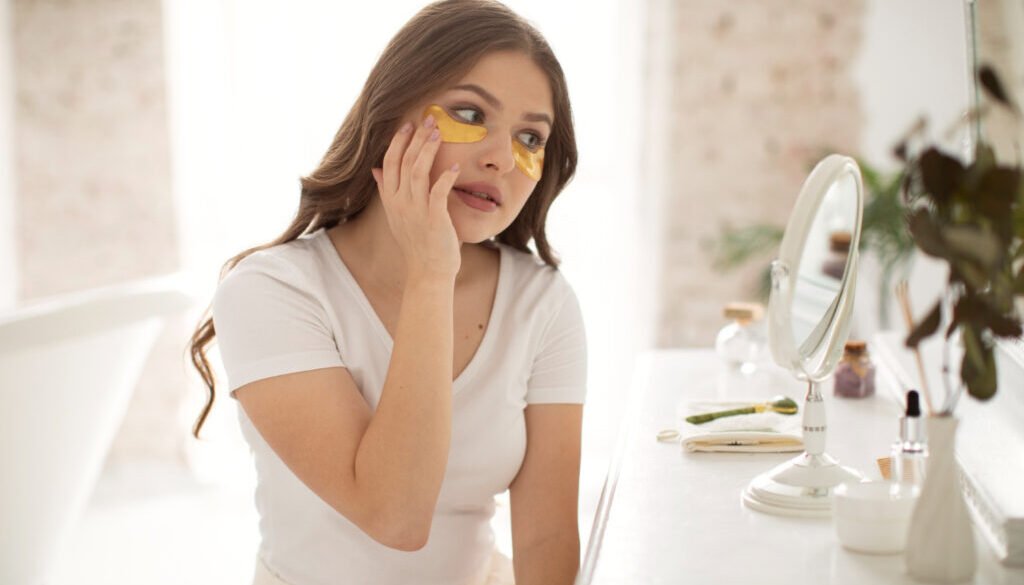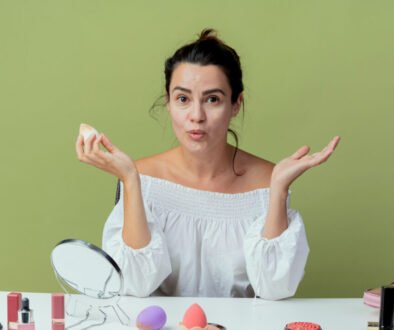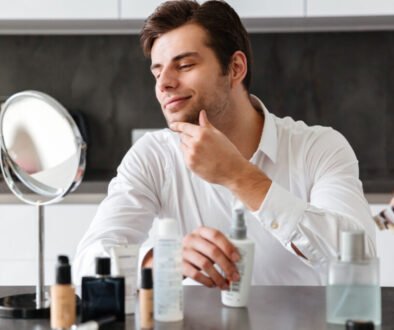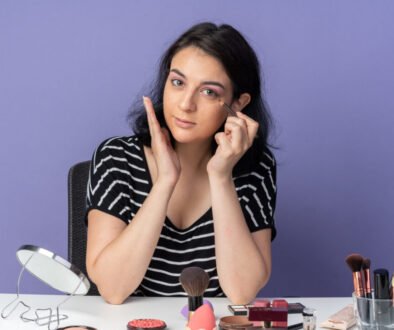Skincare Routine for Oily, Dry & Combination Skin Types (2025 Guide)
Introduction
A one-size-fits-all skincare routine doesn’t work because skin isn’t one-size-fits-all. Using products meant for dry skin on an oily complexion can lead to breakouts, while applying oily-skin products to dry skin can cause irritation and flaking.
The secret to truly great skin isn’t the latest $100 serum—it’s understanding your unique skin type and building a targeted routine around it.
This 2025 guide, built on dermatological principles, will help you identify your skin type and provide a customized, step-by-step routine to balance, nourish, and protect it. You will learn:
Stop guessing and start addressing your skin’s actual needs. Let’s begin.
First, Identify Your Skin Type
- Oily Skin: Shiny appearance throughout the day, enlarged pores, prone to blackheads and acne.
- Dry Skin: Tight, rough, or flaky texture, dull complexion, often feels itchy, barely visible pores.
- Combination Skin: An oily “T-zone” (forehead, nose, chin) with dry or normal cheeks.
Pro Tip: Wash your face with a gentle cleanser, pat dry, and don’t apply any products. After 30 minutes, observe how your skin feels and looks.
The Customized 2025 Routines
1. Skincare Routine for Oily Skin
Goal: Balance oil production, minimize pores, prevent breakouts without over-stripping.
Key Ingredients to Love: Niacinamide, Salicylic Acid (BHA), Hyaluronic Acid, Clay, Retinoids.
Ingredients to Avoid: Heavy oils, thick comedogenic creams, alcohol-based products that strip the skin.
Morning Routine:
- Cleanser: Gel or foaming cleanser with Salicylic Acid or Niacinamide.
- Treatment: Niacinamide serum to regulate oil and minimize pores.
- Moisturizer: Oil-free, gel-based moisturizer with Hyaluronic Acid.
- Sunscreen: Lightweight, matte-finish, oil-free (non-comedogenic) SPF 30+.
Evening Routine:
- Cleanser: Double cleanse if wearing sunscreen/makeup. Start with an oil cleanser.
- Treatment: Retinol or Salicylic Acid treatment (rotate nights, don’t use both at once).
- Moisturizer: Same light gel moisturizer.
2. Skincare Routine for Dry Skin
Goal: Intense hydration, repair skin barrier, and prevent moisture loss.
Key Ingredients to Love: Ceramides, Hyaluronic Acid, Squalane, Shea Butter, Peptides.
Ingredients to Avoid: Drying alcohols, foaming cleansers, fragrance, physical scrubs.
Morning Routine:
- Cleanser: Cream or milky hydrating cleanser. Or just rinse with water.
- Treatment: Hydrating serum with Hyaluronic Acid applied to damp skin.
- Moisturizer: Rich cream with Ceramides and Squalane.
- Sunscreen: Hydrating, dewy-finish sunscreen. Mineral options are often great.
Evening Routine:
- Cleanser: Balm or oil cleanser followed by a hydrating cream cleanser.
- Treatment: A gentle peptide serum or continue with hydrating serum.
- Moisturizer: A thicker night cream. Consider “slugging” 1-2x/week with a thin layer of petroleum jelly to lock in moisture.
3. Skincare Routine for Combination Skin
Goal: Balance the T-zone without dehydrating the cheeks. It’s all about strategic application.
Key Ingredients to Love: Niacinamide, Hyaluronic Acid, Lactic Acid (gentle AHA), Polyhydroxy Acids (PHAs).
Ingredients to Avoid: Harsh, stripping products all over the face.
The Zone Strategy: Apply products for oily skin to your T-zone and products for dry skin to your cheeks.
Morning Routine:
- Cleanser: Gentle, balanced gel-to-cream or foaming cleanser.
- Treatment: A balancing Niacinamide serum all over.
- Moisturizer: Lightweight lotion all over. Add an extra drop to dry cheeks.
- Sunscreen: A universal, lightweight lotion SPF.
Evening Routine:
- Cleanser: Gentle double cleanse with a balancing oil cleanser.
- Treatment: (Optional) Apply a BHA (Salicylic Acid) only on the T-zone 2-3x a week. Use a hydrating serum on cheeks.
- Moisturizer: Use your lightweight lotion all over. You can use a richer cream on cheeks if they are very dry.
The One Rule for All Skin Types
SUNSCREEN IS NON-NEGOTIABLE. Regardless of your skin type, use a broad-spectrum SPF 30+ every single morning. This is the ultimate anti-aging and skin-protecting step.
When to See a Dermatologist
If your routine isn’t addressing persistent issues like severe acne, painful redness, eczema, or extreme sensitivity after 6-8 weeks, it’s time to consult a professional. Prescription treatments may be necessary.
Key Takeaways
- Identify First, Treat Second. Know your skin type before buying products.
- Oily Skin: Focus on balancing, not stripping. Love Niacinamide and BHA.
- Dry Skin: Focus on barrier repair and rich hydration. Love Ceramides and Squalane.
- Combination Skin: Embrace the “zone method” for targeted care.
- Consistency is everything. Stick with your tailored routine for at least a month to see results.
Your skin is unique. Your routine should be too.



